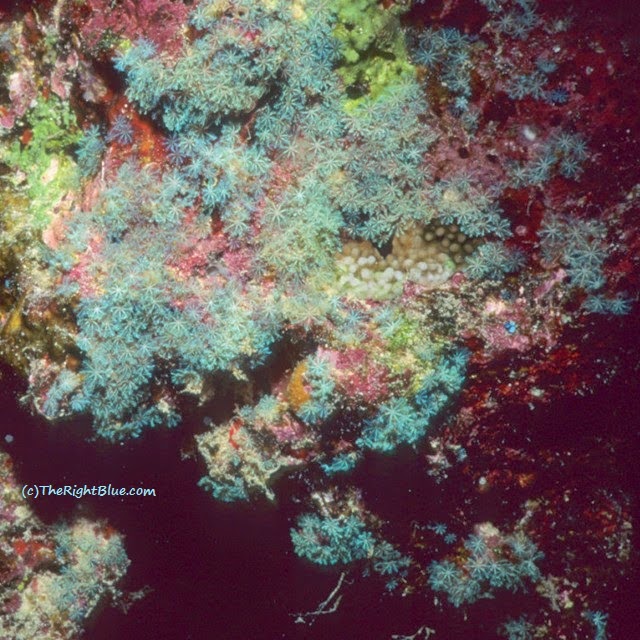BNSullivan.jpg) |
| Green Sea Turtle (Chelonia mydas), basking at Puako, Hawaii |
by B. N. Sullivan
Imagine that you are in Hawaii, walking along near the edge of the ocean. You come upon a sight like that in the photo at the top of this page -- a sea turtle lying on the sand or on the rocks. You may notice that its carapace is dry, indicating that it has been out of the water for awhile. You may feel alarmed, wondering if it is stranded. You think: Maybe a wave washed it ashore and it doesn't know how to get back into the ocean. Or perhaps it crawled out of the water intending to nest, but got stuck.
If it is a Green Sea Turtle (
Chelonia mydas), chances are very high that it has come ashore intentionally, it is not distressed or stranded, and it is not about to lay its eggs. It is engaging in a behavior called "basking" -- another term for sun-bathing.
So far as anyone knows, only green sea turtles engage in this behavior, although no one is certain why they do it, or why they are the only sea turtle species who like to bask. One proposed explanation for basking has to do with temperature regulation, since other kinds of reptiles are known to do this. Another hypothesis is that basking ashore allows the turtles to rest for relatively long periods of time (hours) without risking predation, e.g., by sharks.
Regardless of the reason, Green Sea Turtles do come ashore regularly in many locations in the main, human-populated, Hawaiian islands, none of which are known to be nesting areas for this species. They come ashore to bask in the sun.
So, if you come upon a turtle on the beach or rocks near a shoreline in Hawaii, what should you do? You can watch them for awhile if you like -- just don't get close enough to disturb them. You can photograph them, but please don't use a flash. Don't try to move them or "help" them back into the ocean. They need no assistance: when they are ready to go back to sea, they will do so unaided. So don't block their path to the water, either!
Here are a couple more photos of basking turtles. The first shows one turtle already basking while a second is preparing to "haul out." The final photo shows a turtle who apparently has decided she has worked on her tan enough for the day, and is returning to the water.
BNSullivan.jpg) |
| Green Sea Turtles near the water's edge in Hawaii |
BNSullivan.jpg) |
| A Green Sea Turtle returning to the ocean after basking |
All of the basking sea turtles on this page were photographed at Puako, on the west coast of the Big Island of Hawaii.
For more information about this behavior of sea turtles in Hawaii, see:
Whittow, G.C., & Balazs, G.H. (1982).
Basking behavior of the Hawaiian green turtle.
Pacific Science, 36(2), 129-139 - (11-page PDF)
BNSullivan.jpg)
BNSullivan.jpg)
BNSullivan.jpg)
BNSullivan.jpg)
BNSullivan.jpg)
BNSullivan.jpg)
BNSullivan.jpg)
BNSullivan.jpg)
BNSullivan.jpg)
BNSullivan.jpg)
BNSullivan.jpg)
BNSullivan.jpg)
BNSullivan.jpg)
BNSullivan.jpg)
BNSullivan.jpg)
BNSullivan.jpg)
BNSullivan.jpg)
BNSullivan.jpg)
BNSullivan.jpg)
BNSullivan.jpg)
BNSullivan.jpg)
BNSullivan.jpg)
BNSullivan.jpg)
BNSullivan.jpg)
BNSullivan.jpg)
BNSullivan.jpg)
BNSullivan.jpg)
BNSullivan.jpg)
BNSullivan.jpg)
BNSullivan.jpg)
BNSullivan.jpg)
BNSullivan.jpg)
BNSullivan.jpg)

BNSullivan.jpg)
BNSullivan.jpg)
BNSullivan.jpg)
BNSullivan.jpg)
BNSullivan.jpg)
BNSullivan.jpg)
BNSullivan.jpg)
BNSullivan.jpg)